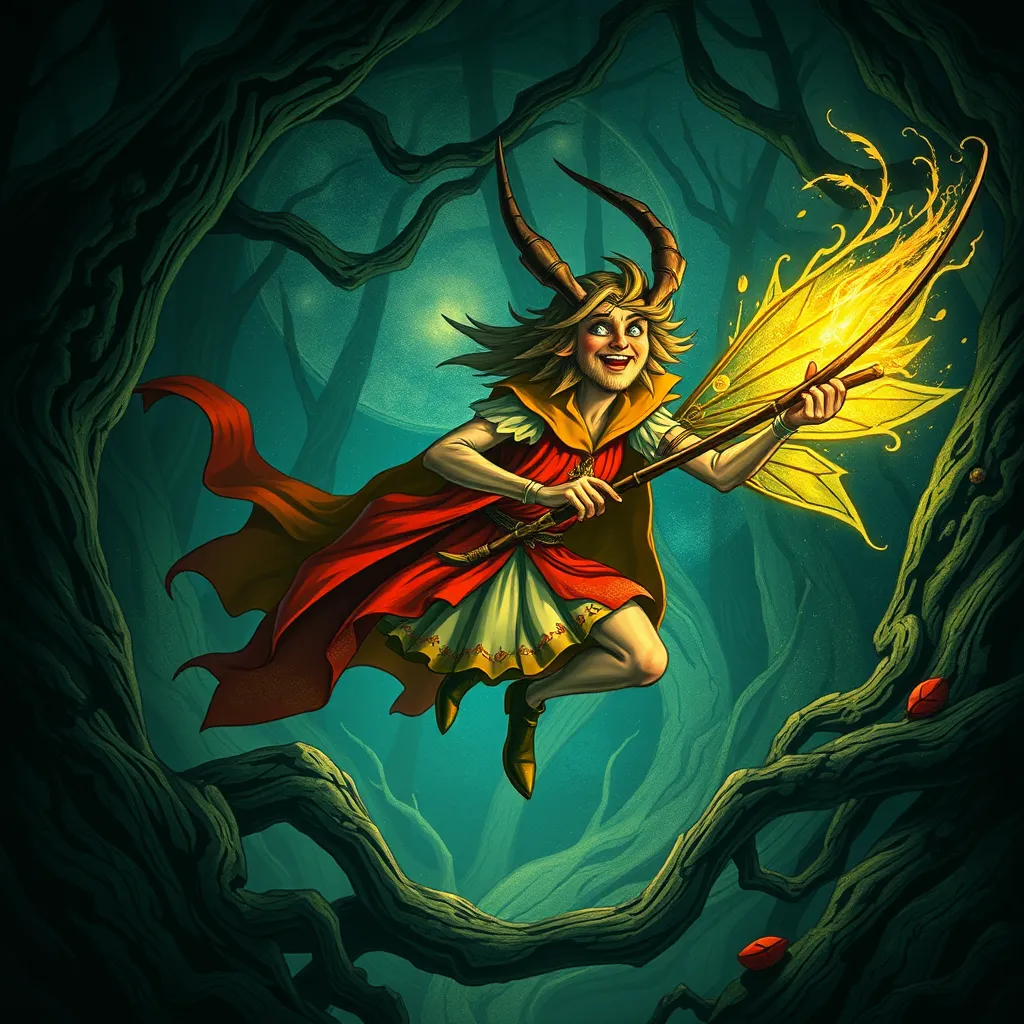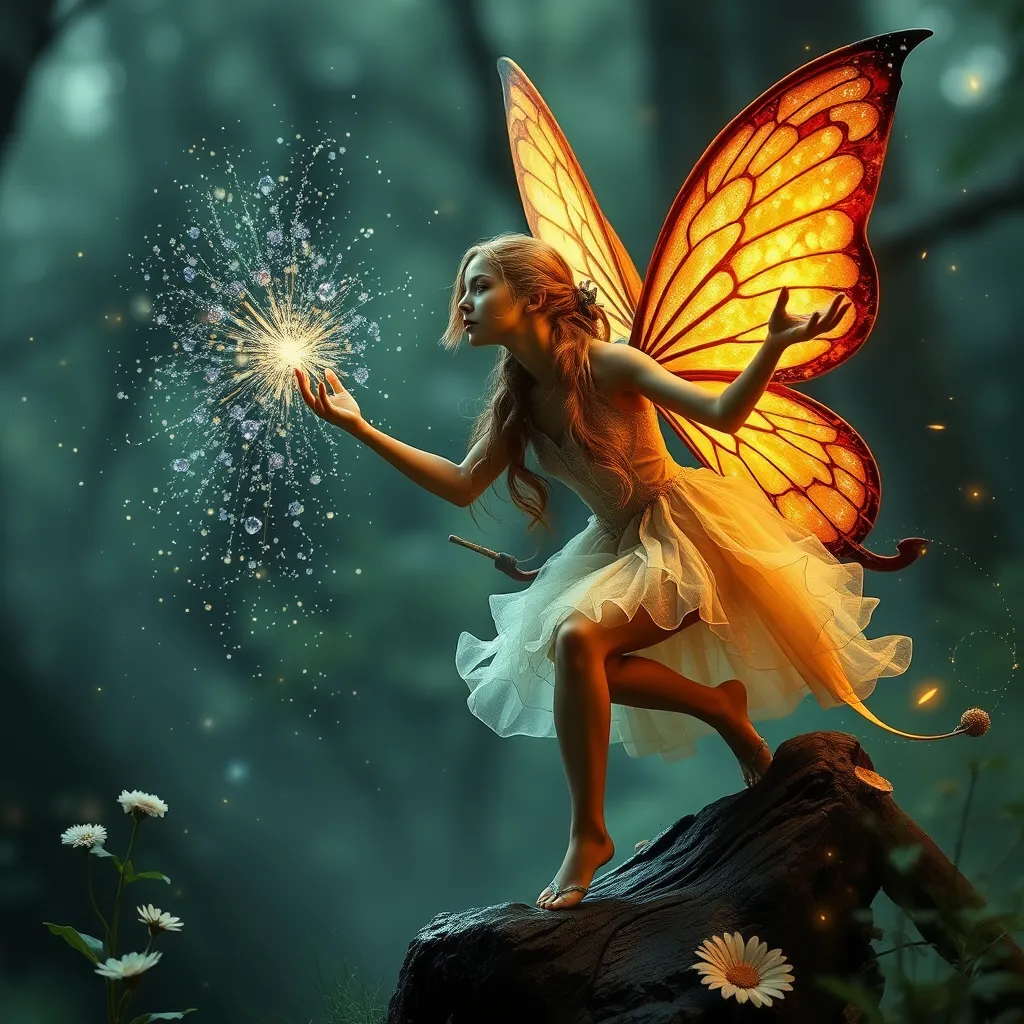The Legend of Robin Goodfellow: The Trickster Fairy of England
I. Introduction
Robin Goodfellow, often known simply as Puck, is a captivating figure in English folklore, embodying the essence of the trickster archetype. With his mischievous nature and playful demeanor, Robin has woven himself into the fabric of cultural narratives, captivating audiences for centuries. Trickster figures like Robin serve essential roles in folklore, challenging norms, and providing comic relief while also imparting moral lessons.
This article aims to explore the origins of Robin Goodfellow, his historical context, character traits, narratives, and lasting impact on English folklore and contemporary culture.
II. Historical Context of English Folklore
The role of fairies in medieval and early modern England was multifaceted. Fairies, often seen as both benevolent and malevolent, occupied a liminal space in society. They were believed to influence human affairs, bringing both fortune and mischief.
The evolution of folk narratives reflects the changing societal implications of these beliefs. As fairy tales were passed down through generations, they adapted to reflect the values and fears of the time, transforming simplistic stories into complex moral tales.
When examining trickster figures globally, one can see parallels with figures such as Loki from Norse mythology and Anansi from African folklore. Like Robin Goodfellow, these characters challenge societal norms, often using wit and cunning to navigate through their worlds.
III. Origins of Robin Goodfellow
Robin Goodfellow’s origins can be traced back to early references in literature and oral traditions. He first appears in texts as a mischievous spirit associated with the woods and the harvest, often helping or hindering humans based on his capricious nature.
Over time, Robin transitioned from a nameless spirit to a recognizable character, embodying the playful spirit of nature. His connection to Puck, a character in Shakespeare’s “A Midsummer Night’s Dream,” solidified his identity as a trickster, showcasing both his charm and his penchant for chaos.
IV. Characteristics and Traits of Robin Goodfellow
Robin Goodfellow is characterized by his playful, trickster persona. He embodies the spirit of mischief, often playing pranks on unsuspecting humans and other fairies. His personality is marked by a combination of humor, cleverness, and a hint of malice.
- Mischievous Nature: Robin delights in causing confusion and chaos, often leading travelers astray or playing tricks on foolish mortals.
- Compassionate Yet Capricious: While he can be benevolent, helping those who are kind-hearted, he is equally known for his malevolent pranks against the rude or arrogant.
- Duality: Robin’s character represents the duality of nature—both nurturing and destructive, reflecting the unpredictability of the natural world.
V. Tales and Adventures of Robin Goodfellow
Numerous tales feature Robin Goodfellow, each highlighting different aspects of his character. Some popular stories include:
- The Harvest Festival: In this tale, Robin helps farmers by ensuring a bountiful harvest, showcasing his benevolent side.
- The Lost Traveler: A story where Robin misleads a traveler, teaching him a lesson about humility and respect for nature.
- Puck’s Pranks: Various anecdotes of Puck’s antics in Shakespeare’s works, where he creates comedic misunderstandings among lovers.
Key themes in these tales often revolve around the consequences of one’s actions, the importance of humility, and the unpredictable nature of life. Humor and satire play significant roles, allowing audiences to laugh at the follies of human behavior while reflecting on deeper moral lessons.
VI. Robin Goodfellow in Literature and Art
Beyond Shakespeare, Robin Goodfellow has been represented in various literary works, including ballads and poems that capture his essence as a trickster. Authors such as Ben Jonson and Robert Greene have also referenced him, contributing to his legacy.
Artistic interpretations of Robin, from illustrations in fairy tale books to modern adaptations in theater and film, reflect his enduring appeal. Artists often depict him with a playful expression, emphasizing his connection to nature and the whimsical aspects of the fairy realm.
In contemporary culture, Robin Goodfellow continues to inspire adaptations in literature and media, often appearing in fantasy novels and television shows, reinforcing the timeless allure of trickster narratives.
VII. The Legacy of Robin Goodfellow
The impact of Robin Goodfellow on English folklore and fairy tales is profound. He has shaped the perception of fairies as complex beings capable of both good and mischief. His legacy influences contemporary views of tricksters, emphasizing their role in challenging societal norms and providing comic relief.
Moreover, Robin’s stories resonate with the universal themes of mischief and magic, reminding us of the chaos and wonder inherent in life. The enduring appeal of such tales highlights the importance of storytelling in preserving cultural identity.
VIII. Conclusion
In summary, Robin Goodfellow stands as a significant figure in English folklore, representing the trickster archetype with his blend of mischief and charm. His tales, rich in humor and moral lessons, continue to captivate audiences today.
As we reflect on the relevance of trickster figures like Robin, it becomes clear that their stories serve not only as entertainment but also as vital reflections of human nature and society. Ultimately, Robin Goodfellow’s legacy is a testament to the lasting impact of folklore on cultural identity and the human experience.



